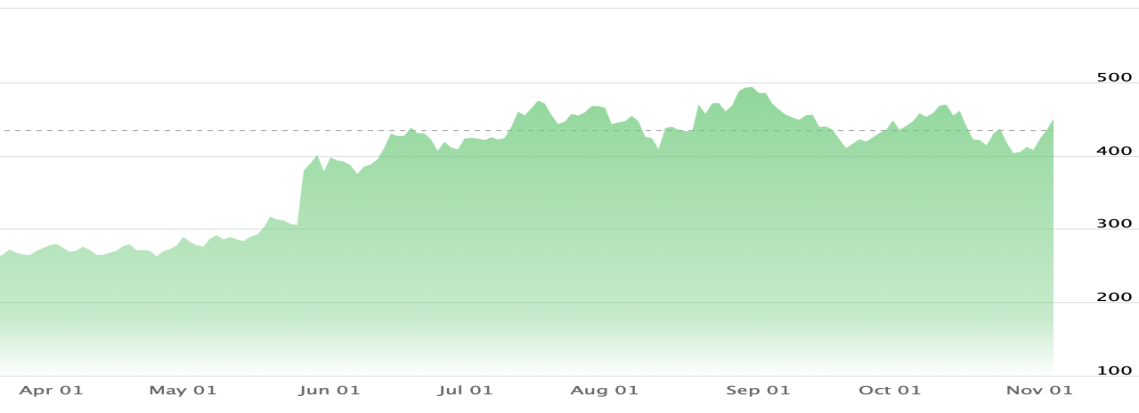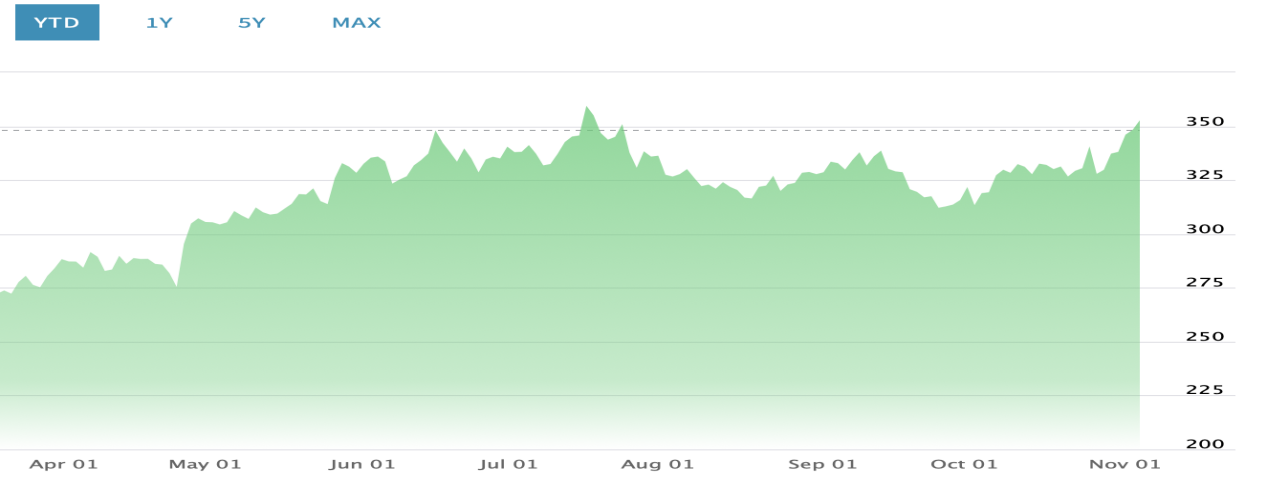1. Introduction
The 2022 National Strategy For Advanced Manufacturing report, developed by the NSA following extensive public outreach, contains a vision for the leadership the United States hopes to provide in advanced manufacturing [1]. According to The 2022 National Strategy For Advanced Manufacturing report, in the development and implementation of advanced manufacturing technologies, the Chip and Science Act, which was passed into law in August 2022 to provide investment in semiconductor infrastructure, highlights that the United States achieved its goal of accelerating innovation in electronics and semiconductor manufacturing. In the development of an advanced manufacturing workforce, in the past five to ten years, the U.S. state has issued many policies to support advanced manufacturing workforce development, among them the increase in the number of specialized courses and research institutes in the field of AI. In enhancing the Resilience of the Manufacturing Supply Chain, in 2021, the White House established a group called the Supply Chain Disruptions Task Force to work with businesses to address supply chain bottlenecks and reduce reliance on overseas production. As the direction that the US government is to encourage, it signals the biggest investment opportunity in the next few years.
2. Research on portfolio selection methods and efficiency in the artificial intelligence field
2.1. Data sources and an introduction
Based on the recent momentum of AI, building a portfolio in AI is able to verify the return efficiency of the models in a short period of time, as the stock of companies in this sector can be predicted to have a large growth rate. In 2023, Apple, Microsoft, Nvidia, and Alphabet, and their subsidiaries, were named as the top 10 most innovative ai companies in the world by FASTCOMPANY [1]. So building the portfolio from these 4 companies is effective. At the same time, CSIMarket is a useful site to search for the gains and declines in the four companies and news about the AI industry. Investors also need to pay attention to the value of investment, considering the intrinsic value of the company to estimate the investment points, rather than follow the public blindly investment [2]. Long-term investment is also possible to verify the efficiency of the returns of this portfolio and the effectiveness of the selection method proposed in this article [2]. The following is the analytical model supporting the authors in establishing this portfolio.
2.2. Analysis model introduction
The Porter Five force analysis was performed by Michael. Porter created a model in the 1980s that analyzed the intrinsic value of a company. This model mainly analyzes the survival status of a company to measure the competitiveness of the company. Investors can tell whether a company should be invested by analyzing possible liquidity threats, threats of alternative products, existing supplier powers, buyer powers, and expected industry competition [3]. The following is the Porter five-force analysis model selected by the author from three of the above four companies.
2.3. Research on portfolio selection methods and efficiency in the artificial intelligence field
2.3.1. Porter’s Five Forces Analysis——Apple.Inc
1. Industrial Competition
High. Apple competes directly with companies such as Google, Hewlett-Packard, Samsung, Huawei, and Dell in PC and mobile. All of these companies, like Apple, spend a lot of money on research and development (R&D) and marketing. As a result, competition in the industry is strong.
2. The Threat of Substitute Products:
Medium. Based on the mature OS ecosystem, Apple’s products such as iPhone, iPad and MacBook can make users dependent and hard to replace. However, in the mobile phone field, Samsung and Xiaomi are constantly improving their own ecological chain, and constantly catching up with Apple to bring the user experience gap.
3. Bargaining Power of Suppliers
Low. The bargaining position of suppliers is weakened by the high number of potential suppliers for Apple and the ample amount of supply. Apple is free to choose from among a large number of potential suppliers for component parts for its products. Meanwhile, the fate of suppliers abandoned by Apple, such as OFILM, has been very dismal. OFILM entered Apple’s supply chain in 2016 and it was kicked out in 2021 [4].
4. Bargaining Power of Buyers
Low. That is because the industry is already highly competitive and has several well-known brands and high market capitalization companies such as Apple, Google, and Amazon. So if a new entrant wants to enter the industry and pose a threat to Apple, it must have a lot of capital to build a good product and a good reputation. It is undoubtedly very difficult. Some Chinese companies that receive financial support from the government may pose a threat to Apple in the future, but not in the short term.
5. Threat of New Entrants
Low. That is because the industry is already highly competitive and has several well-known brands and high market capitalization companies such as Apple, Google, and Amazon. So if a new entrant wants to enter the industry and pose a threat to Apple, it must have a lot of capital to build a good product and a good reputation. It is undoubtedly very difficult. Some Chinese companies that receive financial support from the government may pose a threat to Apple in the future, but not in the short term.
2.3.2. Porter’s Five Forces Analysis——Microsoft Corporation
1. Industrial Competition
High. Microsoft faces intense competition from major players like Apple, Google, and Amazon, as well as numerous smaller software companies. The industry is characterized by rapid technological advancements and continuous innovation, driving companies to develop new products and services to stay ahead. Microsoft invests heavily in research and development to maintain the key elements of its competitive advantage.
2. The Threat of Substitute Products:
Medium. There are alternative software solutions available, including open-source software and competing operating systems. However, Microsoft’s dominant position in the industry, widespread adoption of its products, and the compatibility of its software across different devices create switching costs for customers. This reduces the likelihood of customers readily adopting substitutes.
3. Bargaining Power of Suppliers:
Low. Microsoft has a vast network of suppliers for hardware components, software licenses, and other resources. While some suppliers may hold leverage due to their uniqueness or specialized nature, Microsoft’s strong market position and large-scale operations enable it to negotiate favorable terms with suppliers, ensuring a reliable supply chain.
4. Bargaining Power of Buyers
High. Buyers in the software industry, such as businesses and consumers, have significant bargaining power. They can choose from a wide range of alternative products and services, which increases competition among software providers. Moreover, buyers can demand customization, lower prices, and better service, putting pressure on Microsoft to meet their expectations and maintain customer satisfaction
5. Threat of New Entrants
High. Although Microsoft enjoys a strong market position and brand recognition, new startups and competitors can emerge with innovative products and disrupt the industry. Additionally, the availability of cloud-based solutions and open-source software has lowered barriers to entry, making it easier for new players to enter the market.
2.3.3. Porter’s Five Forces Analysis——Nvidia Corp
1. Industrial Competition
Low. Nvidia’s strengths in GPUs and graphics cards are clear. It invests a lot in innovation and has unique technology and big technical barriers. At the same time, this hardware is also a necessity for AI. In the world, only Nvidia’s GPU can meet the demand for AI computing power.
2. The Threat of Substitute Products
Medium. Very few companies can match Nvidia’s computing power in the AI chip market. Nvidia has many competitors, such as Intel, AMD, etc.; Produces similar products, such as graphics processing units (GPUs) and central processing units (CPUs) used in games and other applications.
3. Bargaining Power of Suppliers
Low. Nvidia has many suppliers at the same time, such as Taiwan Semiconductor Manufacturing Company Limited, Asml Holding Nv, Ase Technology Holding Co Ltd, etc. That means suppliers have less control over prices. Nvidia’s raw material requirements are standardized, so Nvidia has many options at the same time.
4. Bargaining Power of Buyers
Low. Nvidia’s technology is in great need of many large enterprises in the AI industry, so these enterprises are scrambling to obtain orders from Nvidia, and there is a phenomenon that demand exceeds supply.
5. Threat of New Entrants
Low. Nvidia has built strong relationships with key partners and suppliers, which creates high barriers to entry for potential competitors. Nvidia has strong brand recognition and customer loyalty, which makes it difficult for new entrants to gain a foothold in the market. Nvidia has been relatively mature in technology and has the advantage of economies of scale.
2.3.4. SWOT Analysis
The SWOT analysis model is also used to evaluate the competitiveness and relative market position of a company. Investors need to gather the company’s internal information resources and uncontrollable external forces to assess a company’s strengths, weaknesses, opportunities and threats [5,6]. Among them, the advantage represents the advantages or potential advantages of the company compared with other companies in its peers. Disadvantages are weaknesses and potential disadvantages. Opportunities are the benefits of external factors to the enterprise, such as industry development and policy support. And the threat is the bad news for the industry. Similarly, the authors selected the following three companies for their analysis:
Table 1. SWOT Analysis Table
Apple.Inc | |
Strengths(S) | Weaknesses(W) |
High customer satisfaction due to the great human-computer interaction experience of Apple products. | Not a high market share in some countries, India, China, etc. |
Opportunities(O) | Threats(T) |
The market for artificial intelligence services are growing | Intense competition in the industry. |
Nvidia Corp | |
Strengths(S) | Weaknesses(W) |
Leading technology has made Nvidia a market leader in graphics cards and GPUs. | Restrictions on the Chinese market have a large impact on performance. |
Opportunities(O) | Threats(T) |
Metaverse and virtual reality markets | Policies limit NVIDIA’s monopoly on growth |
Microsoft Corporation | |
Strengths(S) | Weaknesses(W) |
Extensive R&D in AI has put Microsoft at the forefront of technology | Poor competitiveness in the field of mobile electronics. |
Opportunities(O) | Threats(T) |
The expanding market for artificial intelligence. | In terms of computer software, there is strong competition from Apple |
As shown in table 1, all three companies have strengths against the opportunities that the AI industry as a whole is telling to grow, while at the same time, they have their own weaknesses and threats they face within the industry.
2.3.5. Financial Data Analysis. In Buffett’s investment philosophy, there are many regulations that focus on the analysis of relevant corporate financial indexes [7]Among them, the company’s price-earnings ratio, return on equity, and sales revenue growth rate are the data that investors need to focus on [8,9,10]. As a result, the authors collected the data mentioned by Apple, Nvidia, and Microsoft in their 2021 annual reports. Table 3 is the relevant data information.
Table 2. SWOT Analysis Table
2021 | Apple | Microsoft | Nvidia |
Current Ratio | 1.07 | 1.78 | 6.65 |
Quick Ratio | 1.02 | 1.75 | 6.05 |
Debt-to-asset Ratio | 82.03% | 54.35% | 39.77% |
Sales Growth Rate | 33.2% | 15.22% | 61.40% |
Gross Profit Margin | 41.78% | 68.40% | 64.93% |
ROE | 147.44% | 47.15% | 44.83% |
P/E | 26.9 | 36.65 | 49.69 |
2.4. Three models build investment portfolios and determine open positions
After using these three models to determine the competitive edge of Apple, Microsoft and Nvidia, these models can also advise investors on which stocks they should most holdAccording to Porter’s Five Forces Analysis, investors can hold the largest positions at Nvidia, as Nvidia is under least threat at the five forces. At the same time, investors should also note that this model can help investors to make value investments and build investment portfolios. However, this analytical model has a certain degree of subjectivity. According to Financial Data Analysis, it is the most sensible to hold the largest position in Nvidia, because Nvidia has the highest P / E and excellent ROE. In other index comparisons, it also achieved the highest ranking in the majority.
3. Discussion
As shown in figure 1, figure 2, and figure3, since the data comes from AI industry data for the first half of 2023 and the companies’ semiannual statements, the authors started investing in these three companies in April 2023 and sold shares of NVIDIA, Apple, and Microsoft in August. Below is a 4-month chart of the stock prices of these three stocks:

Figure 1. NVIDIA’s stock price changed from April through August, with one huge jump in mid-May.

Figure 2. Apple’s stock price changes between April and August.

Figure 3. Microsoft’s stock price changes between April and August. The stock price rose steadily.
4. Conclusion
Based on the performance of the three stocks, NVIDIA, Apple, and Microsoft, an investor can invest using these three models where financial analysis and Porter’s Five Forces analysis are highly efficient. Of course, the authors’ trades were made in a relatively short run, which may have led to an element of luck in the rise and fall of these three stocks. When investing in the stock market, investors should choose to invest for the long term. Although AI-themed companies are very popular in today’s stock market and the outlook is very favorable, the investment should refer to more data when choosing buying and selling points, but also to maintain rationality!
References
[1]. Subcommittee on Advanced Manufacturing. 2022, National Strategy for Advanced Manufacturing.
[2]. Max, U. 2023, The 10 most innovative companies in artificial intelligence of 2023.
[3]. Adam, H. 2023, Value Investing Definition, How It Works, Strategies, Risks. investopedia.
[4]. IvyPanda. 2019, Porter’s Five Forces.
[5]. Malcolm, O. 2021, Apple camera supplier O-Film may be out of the iPhone supply chain.
[6]. Will, K. 2023, SWOT Analysis: How To With Table and Example.investopedia.
[7]. Mahmoud, R. 2011, Value investing: review of Warren Buffett’s investment philosophy and practice. (Research Gate. vol. 2), no. 4, pp. 4-6.
[8]. Andrea, F. David, K. Lasse, H. 2013, National Bureau of Economic Research.
[9]. Barry, D. 2023, 20 Warren Buffett Rules of Investing & How To Implement Them. Liberatedstocktrader.
[10]. Stocklock, Track your stock portfolio and research investing ideas. https://stocklight.com/stocks/us/manufacturing/nasdaq-nvda/nvidia/annual-reports/nasdaq-nvda-2022-10K-22750748.pdf.
Cite this article
Qin,T. (2024). Portfolio selection methods and efficiency research. Theoretical and Natural Science,31,180-186.
Data availability
The datasets used and/or analyzed during the current study will be available from the authors upon reasonable request.
Disclaimer/Publisher's Note
The statements, opinions and data contained in all publications are solely those of the individual author(s) and contributor(s) and not of EWA Publishing and/or the editor(s). EWA Publishing and/or the editor(s) disclaim responsibility for any injury to people or property resulting from any ideas, methods, instructions or products referred to in the content.
About volume
Volume title: Proceedings of the 3rd International Conference on Computing Innovation and Applied Physics
© 2024 by the author(s). Licensee EWA Publishing, Oxford, UK. This article is an open access article distributed under the terms and
conditions of the Creative Commons Attribution (CC BY) license. Authors who
publish this series agree to the following terms:
1. Authors retain copyright and grant the series right of first publication with the work simultaneously licensed under a Creative Commons
Attribution License that allows others to share the work with an acknowledgment of the work's authorship and initial publication in this
series.
2. Authors are able to enter into separate, additional contractual arrangements for the non-exclusive distribution of the series's published
version of the work (e.g., post it to an institutional repository or publish it in a book), with an acknowledgment of its initial
publication in this series.
3. Authors are permitted and encouraged to post their work online (e.g., in institutional repositories or on their website) prior to and
during the submission process, as it can lead to productive exchanges, as well as earlier and greater citation of published work (See
Open access policy for details).
References
[1]. Subcommittee on Advanced Manufacturing. 2022, National Strategy for Advanced Manufacturing.
[2]. Max, U. 2023, The 10 most innovative companies in artificial intelligence of 2023.
[3]. Adam, H. 2023, Value Investing Definition, How It Works, Strategies, Risks. investopedia.
[4]. IvyPanda. 2019, Porter’s Five Forces.
[5]. Malcolm, O. 2021, Apple camera supplier O-Film may be out of the iPhone supply chain.
[6]. Will, K. 2023, SWOT Analysis: How To With Table and Example.investopedia.
[7]. Mahmoud, R. 2011, Value investing: review of Warren Buffett’s investment philosophy and practice. (Research Gate. vol. 2), no. 4, pp. 4-6.
[8]. Andrea, F. David, K. Lasse, H. 2013, National Bureau of Economic Research.
[9]. Barry, D. 2023, 20 Warren Buffett Rules of Investing & How To Implement Them. Liberatedstocktrader.
[10]. Stocklock, Track your stock portfolio and research investing ideas. https://stocklight.com/stocks/us/manufacturing/nasdaq-nvda/nvidia/annual-reports/nasdaq-nvda-2022-10K-22750748.pdf.









